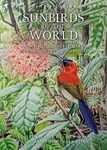![A Shadow Above A Shadow Above]()
Click to have a closer look
About this book
Customer reviews
Biography
Related titles
About this book
For centuries, the raven Corvus corax has stalked us in life and in death. Excavations of Bronze Age settlements in Britain have revealed raven bones mingled with human remains. The Viking and Norman warriors that stormed these shores did so sporting ravens on their shields and banners. By the 15th century the service the birds provided scavenging and picking clean bodies on the streets of British cities led to their protection, under the first-ever piece of nature conservation legislation.
Yet by the 1700s this relationship between humans and the raven had soured. The birds came to be regarded as vermin – representative of something deeper and more visceral – and were driven out of towns and cities with a hatred that moved into savagery. By the close of the 19th century, ravens clung on only in the furthest outposts of the United Kingdom – the southwest, west Wales, and the Scottish uplands – and this remained the case throughout most of the last century, but the past decade has witnessed a remarkable comeback. Raven numbers have increased by 134 percent since the turn of the millennium and there are now well over 12,000 breeding pairs across the country, with these moving ever closer to human settlements.
The history of this bird embodies our best and worst impulses, and symbolizes our deepest fears. Ravens became ingrained in our culture as omens of death, and we projected our own deepest fears on to them.
Joe Shute's book chronicles the return of the raven, and the people who have made that comeback possible. In it, he travels to every corner of the UK, meeting those who have spent the past ten years recording every sound and sighting, and showing why these birds reflect and provoke our innermost feelings.
His interviews will range from the descendants of the Vikings on Orkney to those who monitor the White Cliffs of Dover, where ravens have started breeding for the first time since the Victorian era, to the burgeoning raven roosts of Anglesey. Joe meets biologists studying the vast intellect of the birds which have proved how they mimic human speech – and interactions – and the city dwellers who never imagined the sight of ravens in residential streets could ever be possible in their lifetimes. He also spends time with upland sheep farmers still struggling to come to terms with this uneasy relationship, and asks why we drove this bird to near extinction in the first place.
Customer Reviews
Biography
Joe Shute is senior feature writer for the Daily Telegraph. His day-to-day brief covers crime, history, domestic and international affairs, but his real interest is conservation. A keen ornithologist, Joe regularly write in-depth features on wildlife matters.
Nature Writing
By: Joe Shute(Author)
272 pages, 12 b/w illustrations
Both a chronicle of the return of the raven to Britain, and an examination of our attitudes towards this bird.
"Early in the book, the author makes a confession: 'I came to birds late'. Joe Shute may have misspent his adolescence - youth without ornithology is, by definition, wasted - but he's made up for it. This hymn to Corvus corax is the work of a birdman [...] It soars and calls, entrancing, revealing. In Joe Shute, the raven has found its true hymnist. A wonderful book."
– John Lewis-Stempel, author of Where Poppies Blow, winner of the 2017 Wainwright Book Prize
"Shute writes superbly and his book is both evocative and provocative"
– Hephzibah Anderson, Mail on Sunday
"Shute's enthusiasm, although lightly worn, is deeply infectious [...] he is never pretentious or aggrandising. At his best, he writes with a charming, immediate humanity"
– Robert Leigh-Pemberton, Daily Telegraph
"A beautifully researched, fascinating eulogy that gives real insight into the history and lives of these most remarkable of birds."
– Kate Humble, television presenter
"This book will open your eyes. Ravens allow us to understand British history, culture and character in an entirely fresh way; A Shadow Above brilliantly illuminates this strange bird."
– Sir Anthony Seldon, contemporary historian and political author
"This book is less about Ravens than it is about the variety of shadows that Ravens have cast on human society over the ages, and up to the present day. The author charts a dappled course through myths and legends of Ravens, their cultural significance in different parts of Britain as well as further afield, and findings from studies of Raven biology and behaviour. [...] The narrative flow of the book does not sweep the reader from start to finish, but meanders between disparate patches of prose, pulling them together like pieces of a patchwork quilt. That said, the book is well written, and despite the constant switching between different places and perspectives, the stitching holds. It is, consequently, a book that could be read straight through, but would also be well-suited to readers wishing to explore its contents by dipping sporadically into it. Either strategy will reward the casual reader with a wealth of interesting information about Ravens and, more particularly, our relationship with them."
– Mark Wilson, BTO book reviews

















![Ageing & Sexing of Migratory East Asian Passerines [English / Chinese]](http://mediacdn.nhbs.com/jackets/jackets_resizer_medium/25/250760.jpg?height=150&width=115)
















